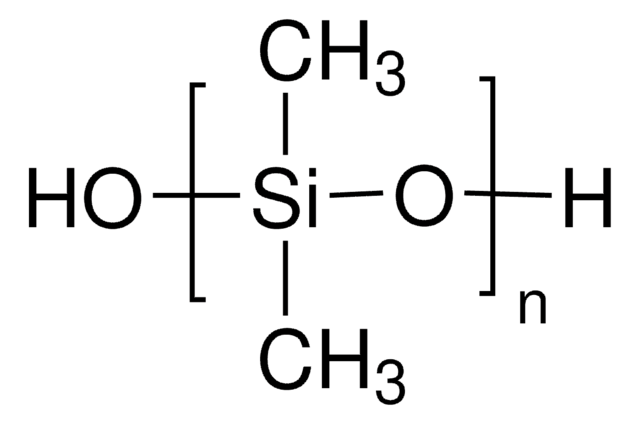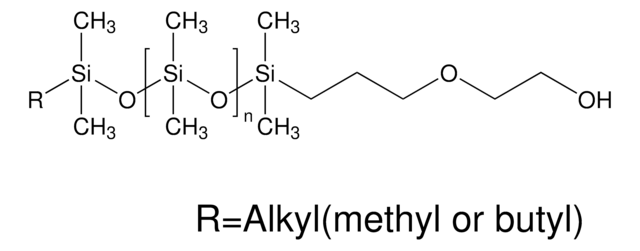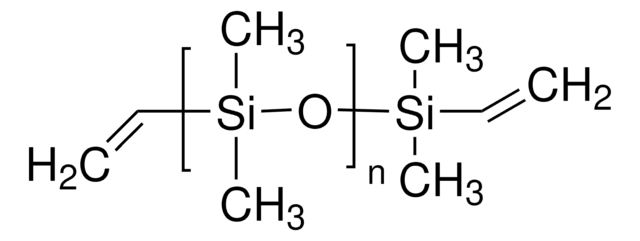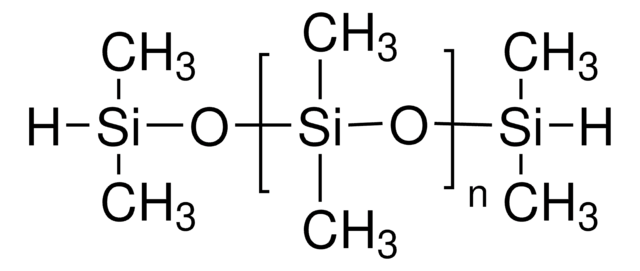481246
Poly(dimethylsiloxane), bis(hydroxyalkyl) terminated
average Mn ~5,600
Synonym(s):
PDMS
About This Item
Recommended Products
mol wt
average Mn ~5,600
refractive index
n20/D 1.409 (lit.)
viscosity
100 cP(25 °C)(lit.)
hydroxyl value
20 mg KOH/g
density
0.98 g/mL at 25 °C (lit.)
Looking for similar products? Visit Product Comparison Guide
Application
Features and Benefits
Storage Class Code
10 - Combustible liquids
WGK
WGK 3
Flash Point(F)
Not applicable
Flash Point(C)
Not applicable
Personal Protective Equipment
Regulatory Listings
Regulatory Listings are mainly provided for chemical products. Only limited information can be provided here for non-chemical products. No entry means none of the components are listed. It is the user’s obligation to ensure the safe and legal use of the product.
JAN Code
481246-100ML:
481246-BULK:
481246-VAR:
481246-25ML:
Certificates of Analysis (COA)
Search for Certificates of Analysis (COA) by entering the products Lot/Batch Number. Lot and Batch Numbers can be found on a product’s label following the words ‘Lot’ or ‘Batch’.
Already Own This Product?
Find documentation for the products that you have recently purchased in the Document Library.
Customers Also Viewed
Articles
Advances in the area of soft optoelectronics, with a focus on the development of organic optoelectronic devices on shape memory polymers (SMP) is discussed.
Self-assembled monolayers (SAMs) have attracted enormous interest for a wide variety of applications in micro- and nano-technology. In this article, we compare the benefits of three different classes of SAM systems (alkylthiolates on gold.
Our team of scientists has experience in all areas of research including Life Science, Material Science, Chemical Synthesis, Chromatography, Analytical and many others.
Contact Technical Service



![Poly[dimethylsiloxane-co-(3-aminopropyl)methylsiloxane] eq. wt. 4,400 Amine](/deepweb/assets/sigmaaldrich/product/structures/427/354/e688e87b-f9db-4070-9e27-fccd23c1dfaa/640/e688e87b-f9db-4070-9e27-fccd23c1dfaa.png)

![Poly[dimethylsiloxane-co-[3-(2-(2-hydroxyethoxy)ethoxy)propyl]methylsiloxane] viscosity 75 cSt (lit.)](/deepweb/assets/sigmaaldrich/product/structures/142/744/ce645067-4d95-4655-9be5-fbd480b436c7/640/ce645067-4d95-4655-9be5-fbd480b436c7.png)
